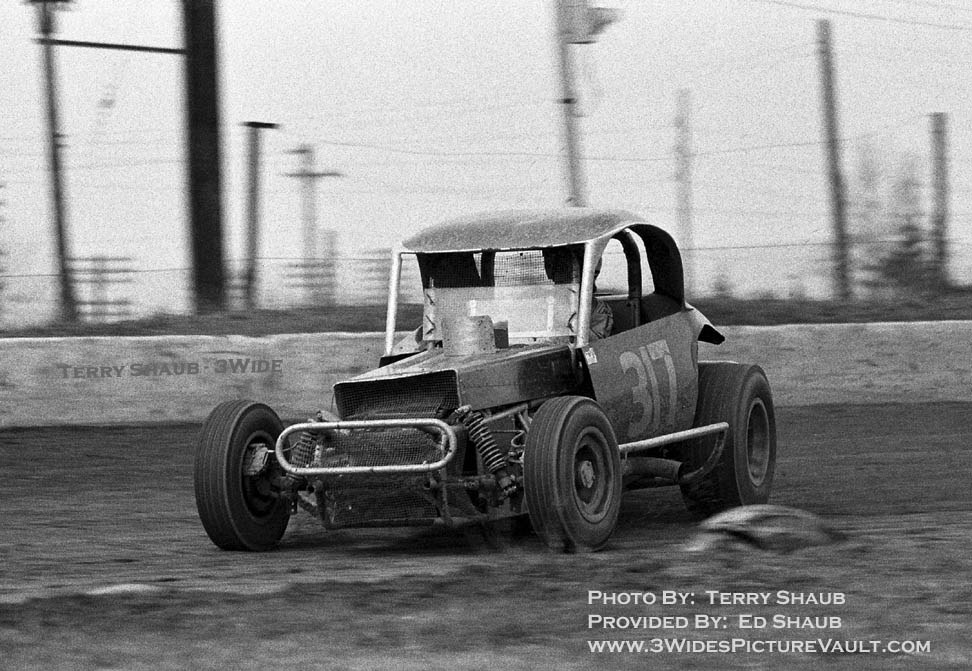| 04.22.12 |
Terry Fick |
If the pic transfers like I want, I will make a point.
Remember when I wrote about spring and shock angles on another pic? This is
a perfect example.
Note the 45 degree angle of the shock and coil over. When you were in school
you were taught about leverage. The same thing applies here, if the spring
is perfectly vertical it will have a greater effect than when you allow
leverage to help the axle compress the spring.
Pick a pic of a later model car, the spring is much closer to vertical than
this. In defense, at that time people thought that mounting the spring as
close to the lower ball joint as possible was the most important thing. The
leverage never entered the equation at that time, even Indy cars ran
"tilted" springs.
Today, we know the most predictable suspension is one where the effective
spring rate is the one with least variables, eg, less angle. Look at the
suspension of a current Indy car, rods and levers resulting in a 1:1 spring
rate ratio. A King car employed the same principles, a reason they were so
dominant in their day.
So let's apply the theory. Consider the car in the pic, if we want a spring
rate at the axle of 400 pounds, what rate do we need to achieve that rate
given the angle/leverage. In addition to the static rate as you increase the
force (torque) will the angle increase the rate as the compression increases
(yes). Look carefully, as you compress the axle the angle of the spring will
increase to greater than 45 degrees. The greater the angle the less
effective spring rate. You never see progressive springs on a race car for
this very reason. The result is a car which is difficult to set up.
Today, we have learned more, making the cars more competitive, allowing more
drivers to run fast, increasing competition. Sadly, the technology costs
money, so many times less talented drivers who can bring sponsor money
become the "best".
The question becomes, was the racing better then or now? Were the drivers
better then or now?
Ah bench racing. Not near as good as strapping your ass in one, but for old
guys like me, all I have left. |
